Here's how to simply integrate Google Analytics data into Chargify
Easily integrate Google Analytics data, such as channel and landing page information, into Chargify in just 4 steps so you can run reports that show you where your signups, customers and revenue are coming from.
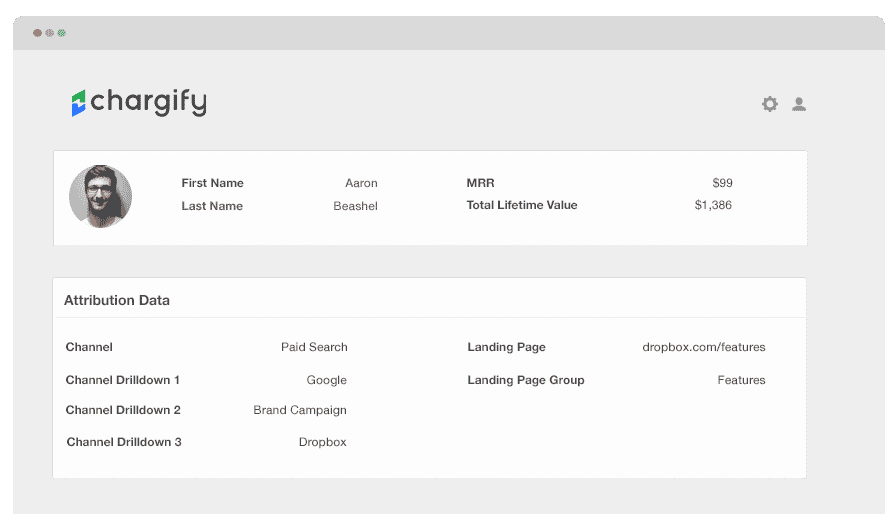
Knowing which of your marketing channels and campaigns are bringing in the most of your customers, signups, and revenue is essential to business growth.
Google Analytics can provide you with the channel information around leads. However, it can’t tell you how many visitors have been converted into customers, how much they pay you, their lifetime value, and how frequent they churn.
To acquire this information, you have to pass the Google Analytics data to your billing platform so you can divide your revenue reports by channel and campaign.
This article helps teach you how you can use Attributer to pass Google Analytics data into Chargify.
What is Attributer?
In its rawest form, Attributer is a piece of code you insert on your site. Its real power can be seen once it’s up and running as it automatically monitors your site’s every visitor and scans some technical data to figure out where your visitor came from.
Once their origin is determined, Attributer groups each visitor into channels like paid search, organic search, paid social, etc. This categorised data is then stored in a cookie in the user’s browser.
Now when a user signs up for your offering, Attributer sends the channel information along with the lead’s details into Chargify.
Once the attribution data is in Chargify, you can use it to answer questions like:
- How many customers have I generated from my Facebook ads?
- What’s the average MRR of customers from my Facebook ads vs. customers from my Google ads?
- What’s the churn rate of customers from organic Google searches?
Integrate Google Analytics data into Chargify in 4 steps
Using Attributer to get Google Analytics data into Chargify is easy. Here's how to do it in 4 easy steps:
1. Include hidden fields in your forms
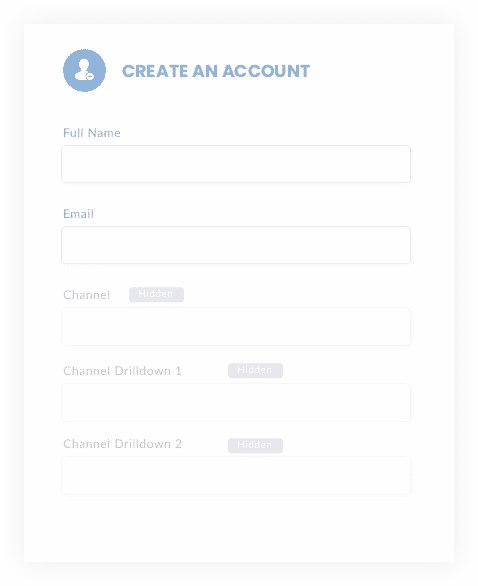
The first step is adding multiple hidden fields to your sign-up forms. These hidden fields include:
- Channel
- Channel Drilldown 1
- Channel Drildown 2
- Channel Drilldown 3
- Landing Page
- Landing Page Group
Alternatively, you can write a simple piece of javascript to pull the data from the cookie and send it through to Chargify when a user completes a signup form. This is handy if you have Google or Facebook signup options where a user can create an account without actually completing a form. For more information on this, check out this help article.
2. Automatically fill hidden fields with Google Analytics data
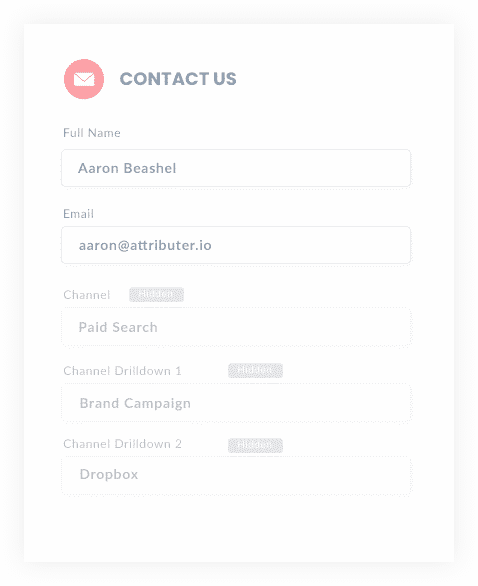
Attributer looks at where your visitors are coming from and once they complete a form on your website, it populates the hidden fields with Google Analytics data.
As an example, if I was a marketer at Dropbox and a visitor came to my website from a brand campaign in paid search, it would populate the hidden fields as follows (depending on the UTM parameters I used behind my ads):
- Channel = Paid Search
- Channel Drilldown 1 = Google
- Channel Drildown 2 = Brand Campaign
- Channel Drilldown 3 = Dropbox
On top of the information on channel, it would also capture the visitor's first landing page (i.e. dropbox.com/blog/best-crm-software) and the first landing page group (i.e. /blog)
3. Google Analytics data flows seamlessly into Chargify
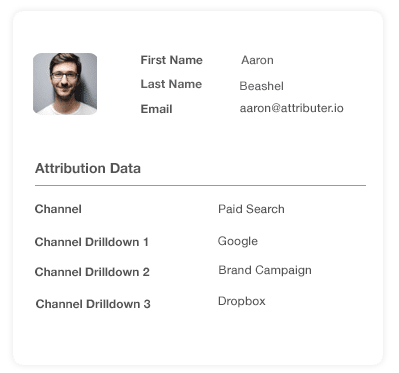
After a user submits a form on your site, the Google Analytics data stored in the cookie is sent into Chargify along with the other data entered in the form, such as the lead’s name, email address, company name, etc.
4. Run reports to understand which channels are driving leads, customers and revenue
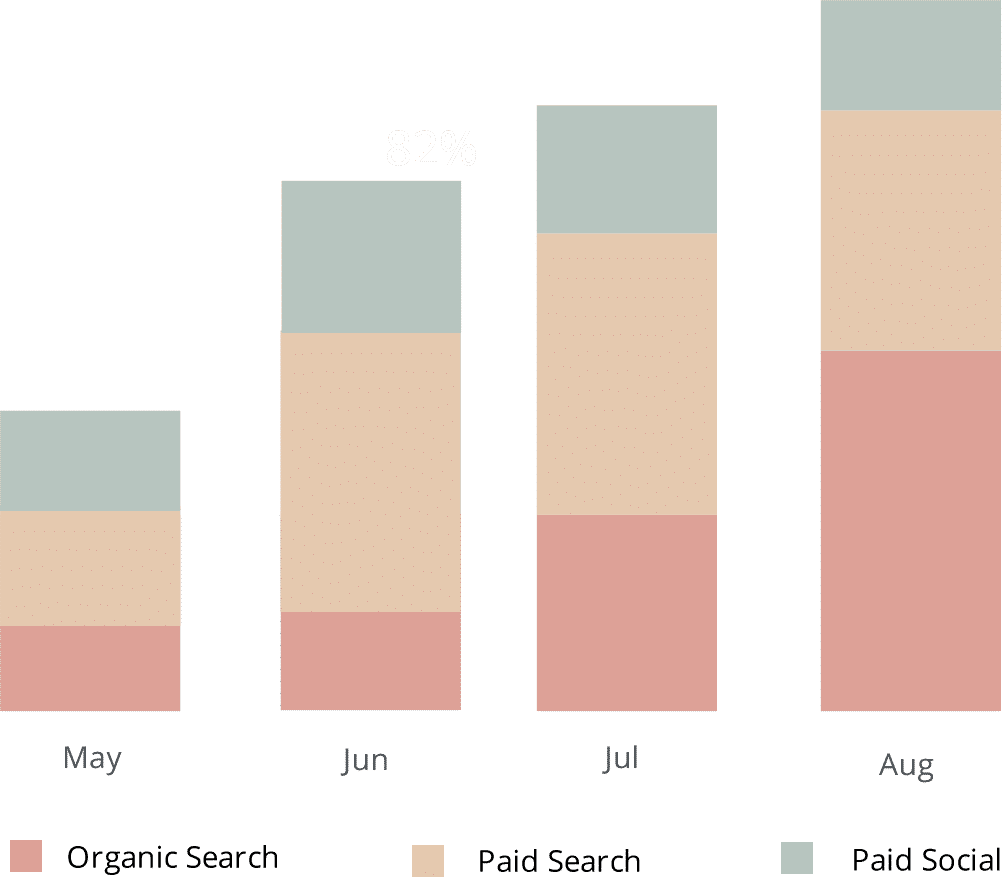
Since you now have the Google Analytics data inside Chargify, you can start running reports that display your numerous subscription metrics grouped according to the visitor’s marketing channel and/or campaign of origin.
These include:
- New trials added each month by channel or campaign
- Trial to customer conversion rate by channel or campaign
- New customers added each month by channel or campaign
- New MRR added each month by channel or campaign
- New ARR added each month by channel or campaign
- ARPU by channel or campaign
- Lifetime value by channel or campaign
- Customer churn rate by channel or campaign
- MRR churn rate by channel or campaign
What data gets passed into Chargify
With years of experience in the field, we here at Attributer have come to find out and believe that there are two fundamental elements to attribution:
- Channel - How did visitors arrive at your site? Usually one of organic search, paid search, paid social, referral, etc.
- Landing Page - Which content piqued their interest and led them there? It could be your features pages, blog, ebooks, etc.
As a result of this need, we built Attributer so it can provide you with all the necessary insights for you to make informed decisions regarding the questions above.
1. Marketing channel data
Attributer intuitively gathers information on the channel where your leads come from (i.e., paid search, organic search, paid social) as well as additional detail on each channel (i.e., For paid search, it also captures the campaign, ad group, keyword, etc.)
2. Landing page data
Attributer also automatically gets a hold of the first page the user sees on your site (i.e., dropbox.com/blog/best-file-storage-tools) as well as the category of the page (i.e., blog).
This data is excellent for viewing related content as a whole. For example, you will be able to see the exact number of leads your blog has generated as well as zeroing in on individual blog posts’ number of generated leads and customers.
What you can do with all this data
Having the Google Analytics data inside Chargify can be helpful in many ways, such as:
1. Report on channels
Since the Google Analytics data is inside Chargify, you can build reports that provide answers to questions like:
- How many signups did you get from your Google ads?
- What's the signup-to-customer conversion rate of leads from your Twitter ads?
- How many customers have been generated by your LinkedIn ads?
- How much MRR or ARR has been generated by your Facebook ads
- What's the lifetime value of customers from your Facebook ads, and how does that compare to other channels?
- What's the overall ROI of your Facebook ads (spend/revenue generated)?
Running reports can be done with Chargify's native reporting tools, or you can send it to your choice of other analytics and business intelligence tools that integrate with Chargify to build more comprehensive reports.
2. Report on content
Considering Attributer collects data on all your visitors’ landing pages (and landing page group), you can also build reports that display how your site’s content is performing.
For example, you could run reports that provide insight into things like:
- How many signups did I get from my blog?
- Which blog posts have delivered the most signups?
- Which blog posts are converting people into customers?
- What is the ROI of my blogging efforts?
Moreover, you can view the conversion rate through to customers of certain parts of your site. For example, you may see that while your blog is generating a lot of visitors and sign-ups, only a handful of them are being converted into customers. With this information, you can decide whether to continue or redirect your time, attention, and resources to it or somewhere else.
Wrap up
Attributer is an excellent solution for getting Google Analytics into Chargify.
It is easy to install, and once it is working, it lets you create detailed reports and dashboards right inside Chargify. These reports and dashboards can help you gain insight into the performance of your content, advertising campaigns, SEO efforts, and more.
Did we mention the best part yet? It’s free to start! Start your free trial today and see if it fits your needs.
Get Started For Free
Start your 14-day free trial of Attributer today!

About the Author
Aaron Beashel is the founder of Attributer and has over 15 years of experience in marketing & analytics. He is a recognized expert in the subject and has written articles for leading websites such as Hubspot, Zapier, Search Engine Journal, Buffer, Unbounce & more. Learn more about Aaron here.
